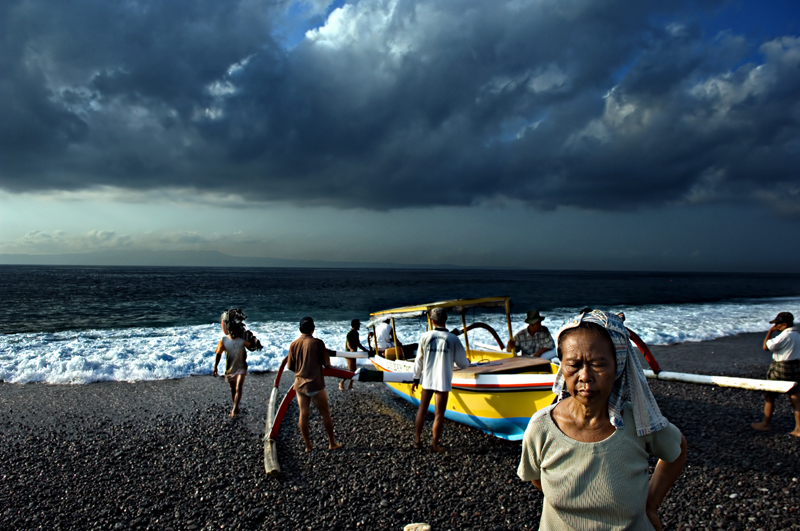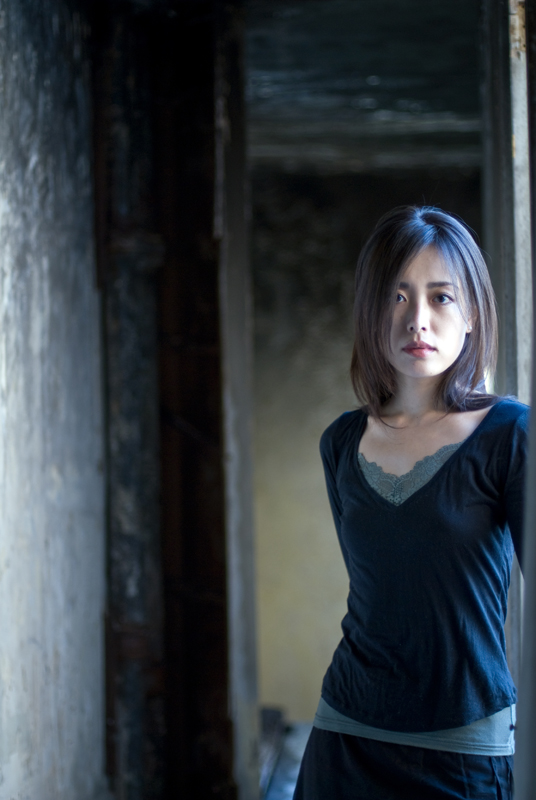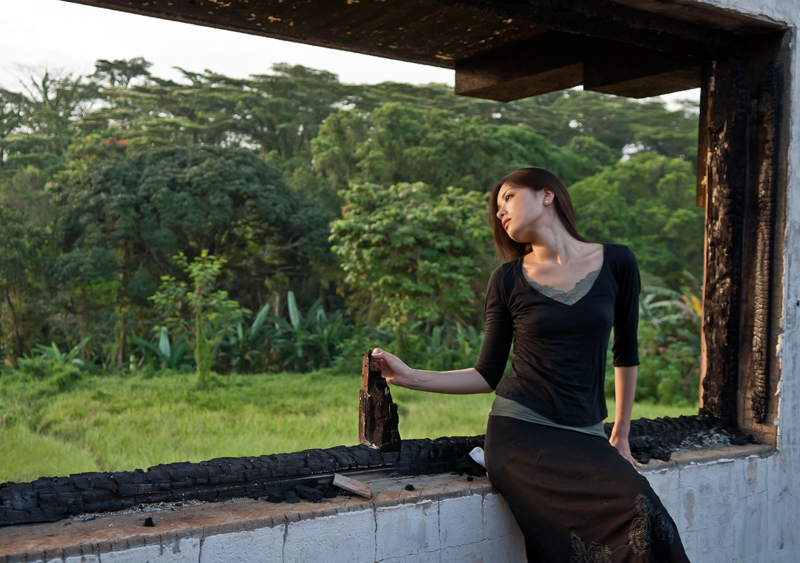Quite a few articles have been written about portraiture being one of the most difficult photography genres to master. Search online, and more than half a million blogs write about portraiture—a lot of people are trying to make sense of all the things that go into making a beautiful portrait.
Portraits are the most interesting images for people, and because shooting portraits is not that easy, a photographer can have loads of fun learning about how to make a compelling portrait – one that will haunt or be memorable. For someone who is slightly obsessed, there are some simple things to do to practice essential portraiture skills without using a camera.
How Watching People Will Make You a Better Portrait Photographer
A portrait photographer tries to capture someone’s personality in a photo. Sounds cliché, I know, but there we are. Unless it’s for a passport photo or an ID, a portrait is more interesting if it tells us something about the person in it. Watching people in public places, if you can pull it off without being rude, is a great way to practice your skill of studying a person and finding an expression or a gesture that tells you how they feel, what they might be thinking, or something about their likes and dislikes.
Pay Attention to Their Faces
Changes in expression happen at split seconds, and it pays to anticipate a facial expression of the subject the split second before you press the shutter. One of the best observation skills I’ve learned without my camera in front of my face is learning to anticipate when something will make someone smile, or frown, or do something interesting with their face.
How the Light Can Make or Break a Photo
Light distracts me to no end. I’ll be walking somewhere or driving somewhere, and all of a sudden in the middle of a conversation, I’ll yell “Ah! Look at that light!” simply because it’s so beautiful. And scenarios would form in my mind of the kinds of beautiful portraits I could make using that light.
Lighting changes the mood of a portrait, so it pays to know in which light you can achieve a certain mood in a portrait.
The photo below was taken indoors around 3:00 in the afternoon, with the light still a little too white, and the effect is that the light looks blue on Akuri. Another observation you might make is that the light is coming from one direction, giving her face the classic window light effect, one side lit and the other side darker.
The next photo below was taken in a wide open room with the setting sun turning orange in color. The time of day the photo is taken changes the color of the light, and gives this image a warmer feeling compared to the previous one. But one thing the two photos have in common is the direction of the light source. The light is coming from one side of the model, and that produces a simple lighting set up which makes the portrait a little more interesting than if the light was coming from the front, behind the photographer.
If I spent time walking around and watching how people look in different kinds of light, I bet I would improve at identifying good light during a photoshoot—it becomes second nature, a good habit to have.
You can practice your ‘photographer’s eye’ even when you don’t have a camera in hand. All it takes is a bit of attentiveness, and a focus on portrait essentials.









20 Comments
What a wonderful photographer and blogger you are Aloha!
Thanks for your kind words, drus! What sort of articles would you like to read? What are you curious about in photography or portraiture? I love looking for things to learn, so let me know!
Aloha, first of all thanks a million for your phenomenally good blog. If I had to “take only one on an island” it would be yours.
If it is something you could imagine doing, I’d like to see an article about how to build rapport/chemistry between photographer and model. Are there some general “do’s and don’ts”? I know you did https://lightstalking.com/building-rapport already but maybe this was more like “preparing a studio shoot” rather than focusing a 100% on rapport building? I think what I’m really interested in, is whether there are tips for creating a temporary relationship with a model so that one can get interesting photos out of them (not contrived but not free-from in the sense of arbitrary either).
N.B.: In the above article you wrote “Leave the profanity, off-color jokes and overall rudeness at home.”. While I agree with the message a 100% the phrasing is a bit unfortunate in that it implies that one would like to do all these things but shouldn’t. It wouldn’t cross my mind to do any of this and I feel a bit like the accused innocent. 🙂
I’ve also read https://lightstalking.com/10-tips-for-working-with-models but I hope that what I wrote above was sufficiently clear to communicate that there might still be room for an article that complements the two I cited. Maybe “X-Tips to Get the Most out of a Model”?
BTW, HCB was once asked why he doesn’t take pictures anymore to which he replied (I’m paraphrasing) “I just took a portrait of you” (and then he referred to some nice alignment of the background with the person’s glasses, I think). So even after he stopped making images with his camera, HCB was still taking pictures in his mind.
I have been taking pictures in my mind now for quite a while now and I’m sure it helps to recognise photographic opportunities when you actually have a camera in your hand (or quickly get the camera, if it is within reach).
Hi Thomas, I think the two articles you mentioned are pretty good and cover a lot of bases. The third topic you mentioned is interesting and might be something we could explore in a later post.
Yes, once a portrait photog always a portrait photog, I believe. Sometimes this can be distracting, but it helps us to hone our skills even without a camera in hand. Thanks for taking time to write down your thoughts!
Best,
Aloha
Hi Tom, The Canon 5D Mk II is a beautifully constructed camera, rugged build, and excellent full frame sensor. It’s actually my dream camera! It’s a little expensive, but you get HD video with the excellent still photos capability. You know ‘House’ is now filmed on the 5D, right? Thanks for stopping by.
I feel like I can become a seasoned photographer without buying a camera. Super insightful.
What do you think of this camera: Canon EOS 5D Mark II
I also want to shoot high quality video.
Thanks Shubd! That’s so inspiring!
Great rules and very simply put ! Superb portraits !
Nice article ..
Simple to digest ..
Thank you for writing it
Thanks Iksa! You are most welcome.
I love the portraits in this article and would love to be able to do the same style, thanks for the article!
Hi Craig, Thanks for the comment and kind words. Make sure you share your portraits when you make them!
I am still a noob photographer with my digital camera. Taking photos is just my hobby but I want to take beautiful snapshots using a basic digital camera. I am still trying with portraiture and yes, it’s some kind of ugly because of the wrong angles I took and wrong angles of light. So for a practice, I take pictures of myself. LOL
Hey Rox, thanks for your comment. I think the best thing in photography is that you get to practice, practice, practice. It’s the little victories that count most.
Thank you for a great piece for beginner and advanced alike!
Encouraging for me to know that my art school. Portrait drawing background is a plus that advances me even as a newcomer to photography. Volunteering at an animal sanctuary, I was surprised at the quality of the pictures that came out. Maybe I can think professionally sooner than later. Researching how this is done.
Hi sara,
It’s really great when you’ve got skills that are already second nature. Drawing helps a lot, especially knowing how to see values.
Good points. People-watching is something I’ve always enjoyed, and I do think it does help in gaining an eye for candid (or semi-candid) portraiture. “Seeing” photographs with your eyes, even when you have no camera in hand, also helps you to develop as a photographer. Nice job.
Thanks Ed. Yes, people watching is a hobby of mine. Lol
Me too, want to thank for a very good blog about photographing.
As my english is not very good, and I study photographing all the time, I use Google translate to get info I cannot understand. Often the blogs are not possible to translate into good Norwegian ( 🙂 hello from Norway)….but your blog, you are very good in english, the most of the text is translated into understandable Norwegian…..
So, your blog with all the good alrticles, is very helpful.
Thank you again.
Tag May! (Sorry that’s the limit of my Norwegian.) 🙂 Thanks for taking time to write your comment.